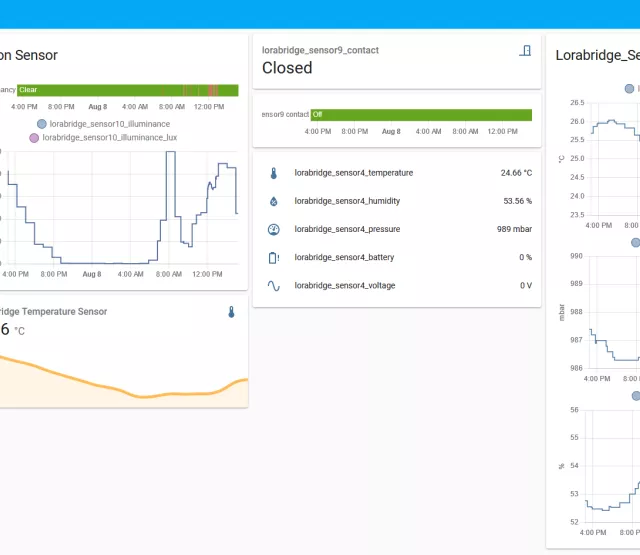
Förderjahr 2021 / Projekt Call #16 / ProjektID: 5788 / Projekt: LoRa Databridge
After testing the bridge and the gateway in our lab environment for a while, we decided to evaluate the usability and the performance of the software in a real use case environment.
For this field test we chose the use case "vintner". In this use case, a vintner deploys multiple, different zigbee sensors (e.g. temperature sensors) across one on their vineyards and utilises the LoRaBridge software to connect those devices via LoRaWAN to another vineyard or their home. The data collected by the LoRaWAN gateway might for instance be used to monitor the temperature and to notice and respond to frosts.
We prepared a LoRaBridge bridge device with an outdoor casing as well as a LoRaBridge gateway device. The bridge device was placed inside a vineyard along with a temperature sensor and an occupancy sensor and was powered by a battery pack.
The LoRaBridge gateway was set up inside our car and remained in there for most test locations. To ensure that the car itself does not compromise the LoRaWAN connection, we mounted an antenna on the exterior of the car an connected it to the gateway. After an initial connection test, we drove to different locations in Langenlois and performed our tests and measurements.

Overall, the experiment went quite well. The connection worked in the vineyards as well as inside the city center, where for instance the home of the vintner might be. In a few city center locations the LoRaWAN connection did not perform very well due to so called deep fading, which dampens the RF signal quality and thus, leads to packet losses. Next to this, we also identified necessary improvements to the setup in order to improve the usability. Finally, our experiment indicates that LoRaBridge technology is a viable solution to the originally planned home automation use-case. For instance, the bridge unit could be mounted into a garden hut, which collects sensor data from zigbee garden sensors and redirects them towards the gateway unit placed at users home.
The further steps in the project LoRaBridge involves additional tests in home automation use-case, improvement of the user interface and preparation of user/developer manuals.




